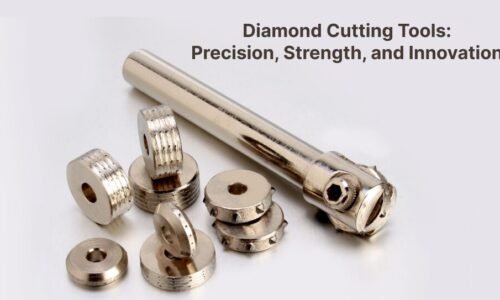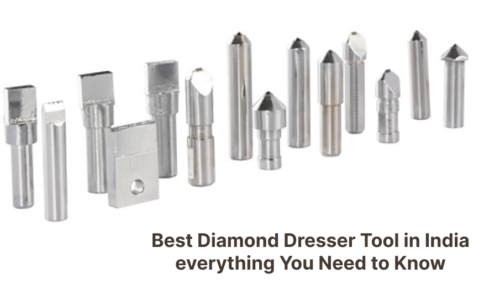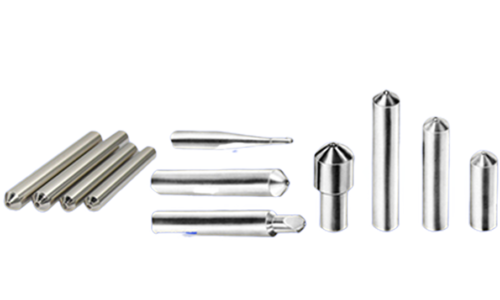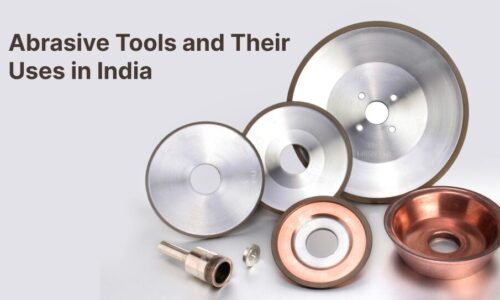
The Importance of Regular Maintenance for Industrial Diamond Tools
- By DDoctor
- Posted on
In the business of industrial manufacturing, the quality of the tools you work with is as important as the quality of the output. Some of the essential equipment in many sectors is the industrial diamond tools. They are very popular because of their hardness coupled with ability to deliver very fine cutting edges used in a multiplicity of fields, such as construction among others. However, as any other equipment, used for performing professional tasks, these tools need constant care to provide the highest results.
In this blog, you will find the details about the regular maintenance of industrial diamond tools, their service life, and maintenance effects, together with information about Jain Diamond Tools as a market leader.
Understanding Industrial Diamond Tools
Industrial diamond tools are a specific type of a tool that incorporate diamonds, which is the hard natural material known to man in cutting, grinding, drilling or polishing. Such tools are especially useful in sectors that would otherwise see the conventional tool wear out or fail to provide adequate accuracy. These tools have diamonds set at the edges of the cutting tools so that they can easily and efficiently cut through concrete, stone, ceramics and metals.
The types of industrial diamond tools include:
- Diamond Blades: Applied in cutting of hard materials such as concrete, stone, asphalt among others.
- Diamond Grinding Wheels: When it comes to grinding and shaping of hard surfaces, then these wheels are just perfect.
- Diamond Drill Bits: Use to drill holes of small dimensions in rigid materials that would not easily be penetrate.
- Diamond Dressers: Sub-tools or accessories which have the purpose of refurbishing and preserving the cutting edges of grinding wheels.
The Role of Jain Diamond Tools
Jain Diamond Tools aims to be one of the largest manufacturers of industrial diamond tools with increased equipment and better products that are of high quality, long lasting and highly accurate. It is the mission of the company to provide products that meet the exacting standards of industry and the organization continues to strive to make sure that their tools are able to stand up to the most strenuous demands.
However, like most, if not all the tools out there, these must undergo maintenance from time to time in order to function at their best. When not well maintained it degrades, and therefore decreases the efficiency, increases the cost of operation and poses some risks.
Why Regular Maintenance is Crucial
1. Enhancing Tool Longevity
A major advantage of proper maintenance of conventional andSuperabrasive industrial diamond tools is an increase in the length of the tools’ service. Diamond tools are expensive tools which when purchase are suppose to be use for a long time if correctly maintain and this has the ability to improve ROI. In the course of using things, they are bound to deteriorate but if well use and care for the deterioration is to some extent can be slow.
Cleaning of the diamond tools on a regular basis for instance, inspection and dressing increases its durability by removing any debris or contaminants that may have affected the tools. Also, by correct dressing method it is made possible to maintain the edge of the diamond as sharp as before to be useful up to the period they are suppose to last.
2. Ensuring Precision and Performance
One of the main characteristics of industrial diamond tools is the high precision of their working surface. Regardless of which operation is to be perform such as cutting, grinding, or drilling, these tools that need to be precise and should not lose form or edge to meet the goal. Maintenance helps keep the diamond tools in proper perspective as well as in healthy condition so that they continuously possess sharp edges and accurate angles as well as proper orientation, all of which are important in industrial work.
For example, a Diamond blade which was not sharpen can get blunt or off angle causing the slabs to have rough surface, slow cutting rate, and high waste. On the other hand, a sharp blade will continue to deliver clean and neat cuts thus making the final product meet the standard eased by passing through.
3. Cost Efficiency
Failure to maintain industrial diamond tools results in several issues that in overall leads to high costs. A tool that is not check and manipulate frequently will have a high tendency of breaking down and thus require replacement at a very high cost. Moreover, tools that are not productive can cause production line delays, and increase the time used and therefore labor costs.
Thus, through schedules for maintenance, such problems can be averte by companies. daily check enables one to detect developing issues before they become major and require great time or perhaps a professional specialist to repair the complicated problem that those tools may develop, thus keeping them to the best state to work on. Through this regular check-up, there will be little need for emergencies that may require expensive and urgent fix or replacement.
4. Safety Considerations
Security is always a major factor of concern, having regard to the nature of any industrial environment. Implementations, if not well maintained, can become dangerous to those operators and other individuals who have to interface with the tools. For example, a diamond blade that is worn or damage may crack and break during usage, which is dangerous since it cause injuries. Consequently, there is a need for proper dressing of the grinding wheel since an improperly dressed one is likely to cause vibrations and thus increase the dangers of an accident.damaged
Therefore, in order to guarantee the safety of their operations, industrial diamond tools need to go through proper maintenance from time to time. In this way, potential safety risks become noticeable during the course of the business, which may prevent accidents. This not only has implications for protecting the employee but also has a strong positive correlation to ensuring that the companies do not run into costly liability breaches.
Key Maintenance Practices for Industrial Diamond Tools
Just like any other tool in industry, proper handling, inspection, and cleaning skills are some of the most vital aspects that are require for the proper maintenance of industrial diamond tools. Here are some key maintenance practices to ensure the longevity and performance of diamond tools:Here are some key maintenance practices to ensure the longevity and performance of diamond tools:
1. Regular Cleaning
Before and after any use, it’s important that one cleans diamond tools to ensure that they do not accumulate dust, debris, or any other form of material. : This debris can impede the tool’s ability to perform because the friction it causes will overheat and increase wear. To avoid such problems, one should clean the tools with a brush or compressed air.
If the tools to be use are, for instance, diamond blades, then one should ensure that the segments and the core are free from any kinds of deposition. Cleaning should be done very carefully so as not to harm the diamond segments.
2. Inspection for Wear and Damage
It is imperative to have a routine checkup of the industrial diamond tools and other materials used since most of the time the signs of wear are not easily identifiable but surface cracks are a signal that the tool is about to fail. During inspections, check for the following:
- Segment Wear: Make certain that all the diamond segments are worn equally. Abnormal wearing of shoes shows a sign of alignment problems or misuse.
- Core Integrity: Diamond blades always check the core for warping or any signs of damage.
- Cracks or Chips: Optionally check on the possibility of fragmenting diamond segments or in the core which could lead to bad performance or even endanger the operator.
- If any of these issues are present then the tool should not be use further and preferably should be dispose of and a new one bought.
If any of these issues are identifie, the tool should be repair or replace before further use.
3. Proper Dressing
Dressing is a method use in shaping the edge of industrial diamond tools so as to remove unwanted material or to refine the surface. This process is however very crucial for grinding wheels since it acts as a regulating step that assists in shaping the wheel and making sure that it has the right cutting edge.
Truing is generally done with a diamond dresser that is use in gently shaving off a small layer of material from the surface of the grinding wheel. This should be done often base on the use of the tool as well as the material being work on frequency.
4. Correct Usage
Use of industrial diamonds is also another aspect of maintenance proceedings. By seeing to it that the tools should only be use within their capacities; that is how fast, how much pressure and on what materials they can be use on to avoid straining them,. Tool should not be overload or use on the wrong type of material for it will result in early wear out of the tool.
Teach the operators how to correctly use the diamond tools, starting with feed rates, cutting speeds, and the right coolants that suit the tool. This way of training minimizes wrong use and helps preserve the tool for a longer period of time.
5. Cooling and Lubrication
The ways used by heat is use to cause the degradation of industrial diamond tools include: In particular, high temperature lead to the degradation of the diamond segments and to the warping or cracking of the core. To this end, it is good to ensure that proper cooling and lubrication methods are employe when in operation.
Heat should be minimize where possible by use of water or other coolants, particularly when the machine is use for operations like cutting or grinding at a very high speed. Coolant is essential not only to cool the tool because the debris accelerates wear and tear of the cutting tool.
The Impact of Neglecting Maintenance
As stated, lack of proper management of the industrial diamond tools leads to severe implications and outcomes in the operation of machines and tools involved. Here are some of the potential impacts of neglecting maintenance:
- Reduce Tool Life: If that is not done, the diamond tool will wear out easily and then may require frequent replacement.
- Decrease Precision: A tool also gets worn out, hence the quality of the cut or grinding would be poor, and this would lead to poor quality products.
- Increased Operational Costs: The frequency as well as the potential for a halt in production, inasmuch as the tools might require replacement, will often incorporate high costs into operations.
- Safety Hazards: When tools are old and frayed or have other signs of wear and tear, they become a danger to the operator or the general public, and their usage may lead to accidents and casualties.
Failure to perform this regularly means that companies can be on the receiving end of these problems while on the other hand, companies that carry out this practice diligently will keenly observe that their industrial diamond tools are working as they expected.
Conclusion
Maintenance therefore becomes a necessity as far as the use of industrial diamond tools is concerned. The benefits of proper maintenance are clear: These benefits include reduced tool wearing rate, high accuracy in workpiece finishing, low cost of operation, and better safeguarding of employees. Jain Diamond Tools being a manufacturer stresses on the kind of tools they manufacture and desire to maintain the quality of their tools so that they can perform up to the expectations of the customers.
These practices of cleaning, inspecting, dressing, proper use, and cooling detailed in this blog will go a long way in preserving and prolonging the usefulness of diamond tools to meet the expectations the industries require. By proper maintenance, industrial diamond tools will continue to be valuable tools to have in the manufacturing department as they provide the accuracy everyone wants and the hardness that is so critical in manufacturing.
FAQs
Q-1.How often should industrial diamond tools be maintaine?
Ans- The frequency of maintenance therefore depends on the amount of the particular tool is use and the type of material to be process. Conduct ad hoc cleaning and simple assessments, while perform dressing and realignment periodically based on the tool’s condition and the amount of work it undergoes
Q-2. What signs indicate that a diamond tool needs maintenance?
Ans- Some of them are the following: A drop in the cutting or grinding efficiency, the segments with an irregularly worn surface, apparent cracks and chips, strong vibrations when in use; and fading sharpness.
Q-3. Can I perform maintenance on diamond tools myself, or should it be done by a professional?
Ans- Routines such as washing and checking can be carrie out by the operator of the equipment. But simple operations such as dressing or dressing up, repairing, or realignment have to be done by a professional to avoid compromising the tool.
Q-4.What are the risks of not maintaining industrial diamond tools?
Ans- Failure to maintain a tool means that it will have a shorter lifespan, be less accurate, be costly to operate, and may at times pose operational dangers such as tool failure or an accident while in use.
Q-5. How does Jain Diamond Tools support customers in maintaining their tools?
Ans- Jain Diamond Tools also has detailed information on how to properly maintain the tools and also provides professional services that keep the diamond tools in the best condition they should be. With this, customers can approach Jain Diamond Tools for professional assistance in the elongation of the life and operation of tools.





